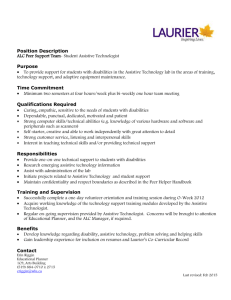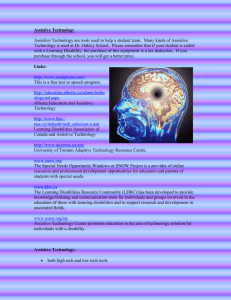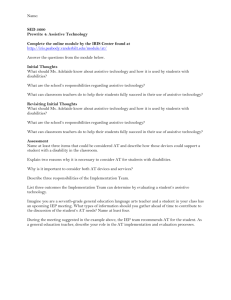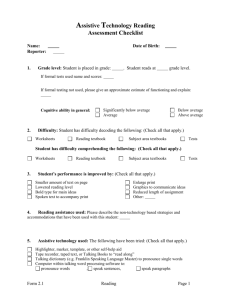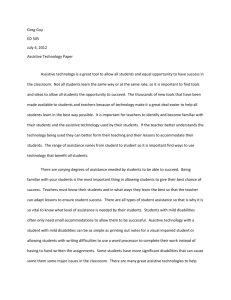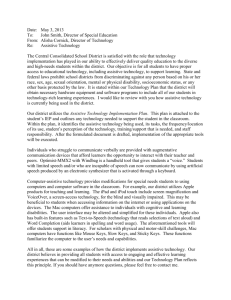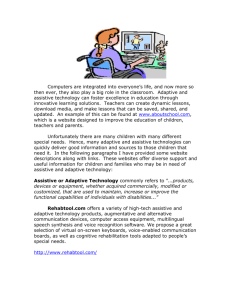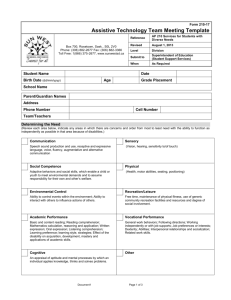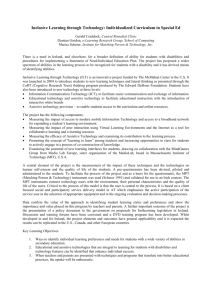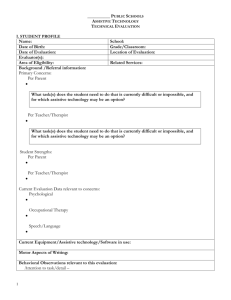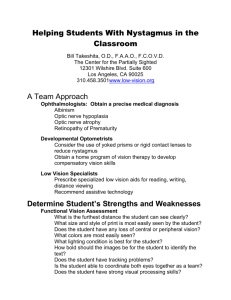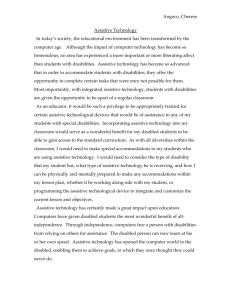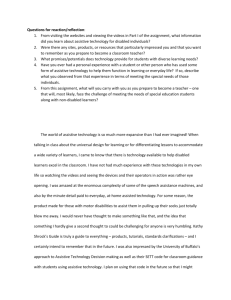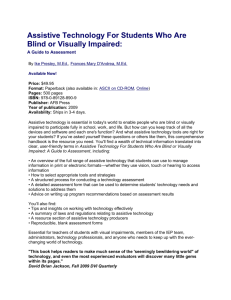How Technology Is Helping Special
advertisement
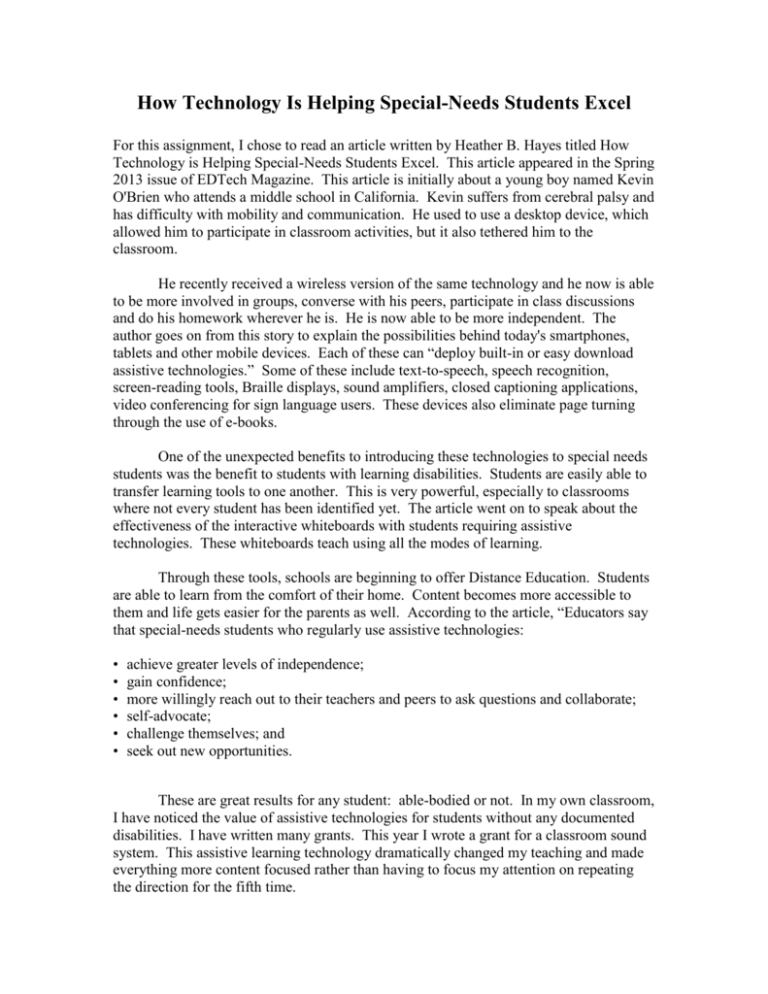
How Technology Is Helping Special-Needs Students Excel For this assignment, I chose to read an article written by Heather B. Hayes titled How Technology is Helping Special-Needs Students Excel. This article appeared in the Spring 2013 issue of EDTech Magazine. This article is initially about a young boy named Kevin O'Brien who attends a middle school in California. Kevin suffers from cerebral palsy and has difficulty with mobility and communication. He used to use a desktop device, which allowed him to participate in classroom activities, but it also tethered him to the classroom. He recently received a wireless version of the same technology and he now is able to be more involved in groups, converse with his peers, participate in class discussions and do his homework wherever he is. He is now able to be more independent. The author goes on from this story to explain the possibilities behind today's smartphones, tablets and other mobile devices. Each of these can “deploy built-in or easy download assistive technologies.” Some of these include text-to-speech, speech recognition, screen-reading tools, Braille displays, sound amplifiers, closed captioning applications, video conferencing for sign language users. These devices also eliminate page turning through the use of e-books. One of the unexpected benefits to introducing these technologies to special needs students was the benefit to students with learning disabilities. Students are easily able to transfer learning tools to one another. This is very powerful, especially to classrooms where not every student has been identified yet. The article went on to speak about the effectiveness of the interactive whiteboards with students requiring assistive technologies. These whiteboards teach using all the modes of learning. Through these tools, schools are beginning to offer Distance Education. Students are able to learn from the comfort of their home. Content becomes more accessible to them and life gets easier for the parents as well. According to the article, “Educators say that special-needs students who regularly use assistive technologies: • • • • • • achieve greater levels of independence; gain confidence; more willingly reach out to their teachers and peers to ask questions and collaborate; self-advocate; challenge themselves; and seek out new opportunities. These are great results for any student: able-bodied or not. In my own classroom, I have noticed the value of assistive technologies for students without any documented disabilities. I have written many grants. This year I wrote a grant for a classroom sound system. This assistive learning technology dramatically changed my teaching and made everything more content focused rather than having to focus my attention on repeating the direction for the fifth time.



